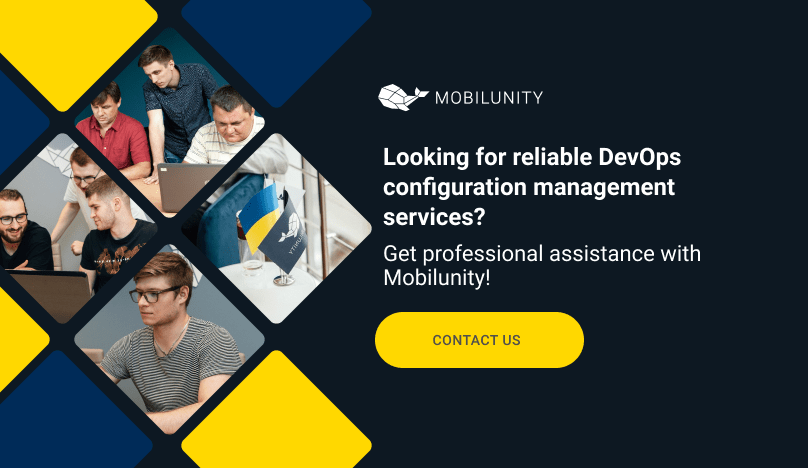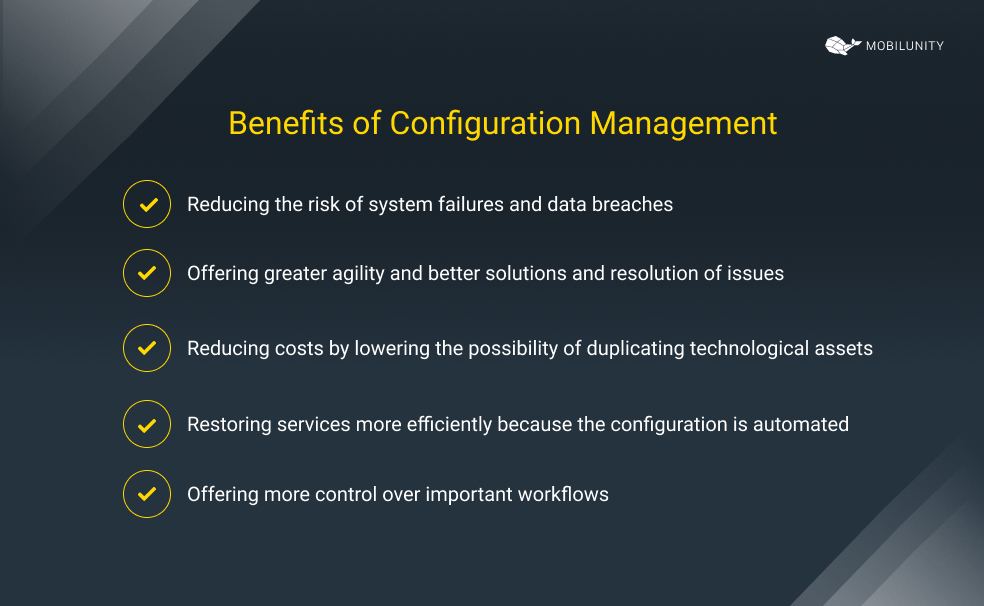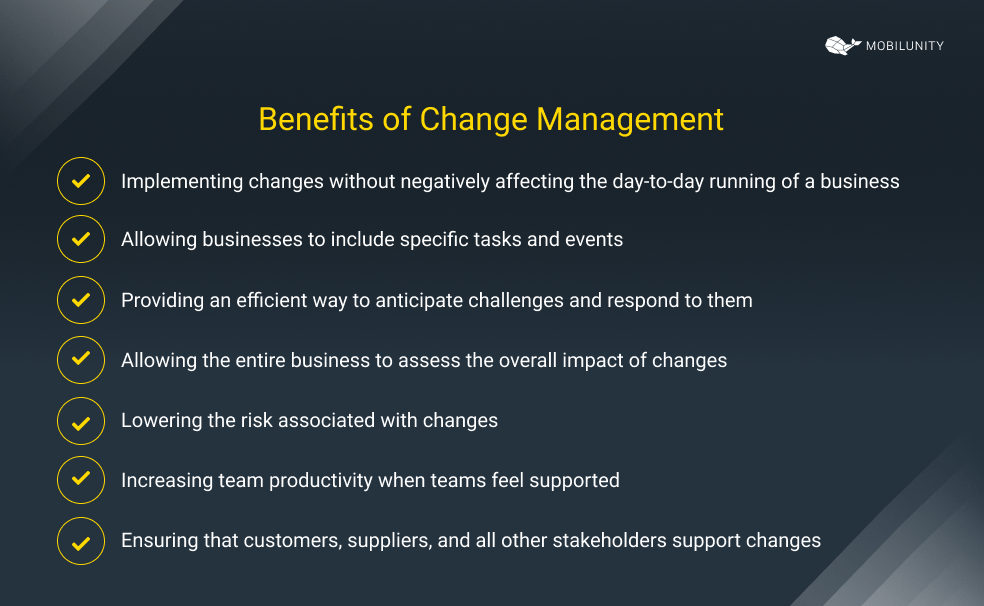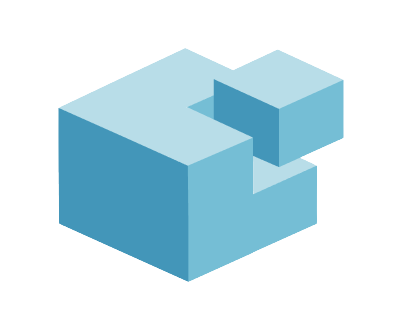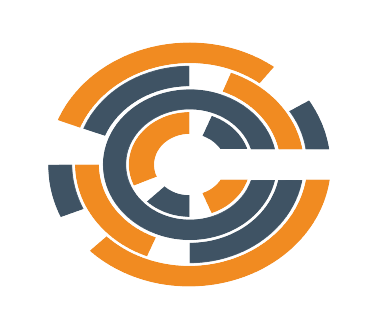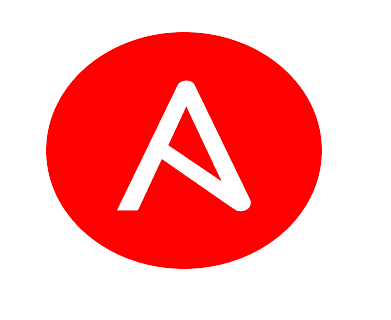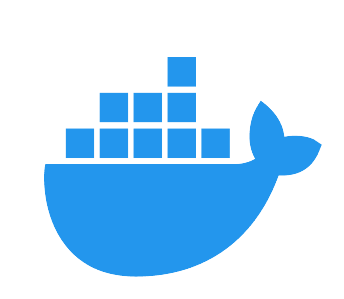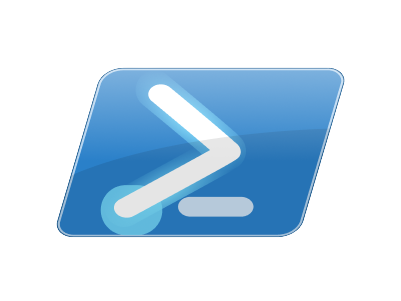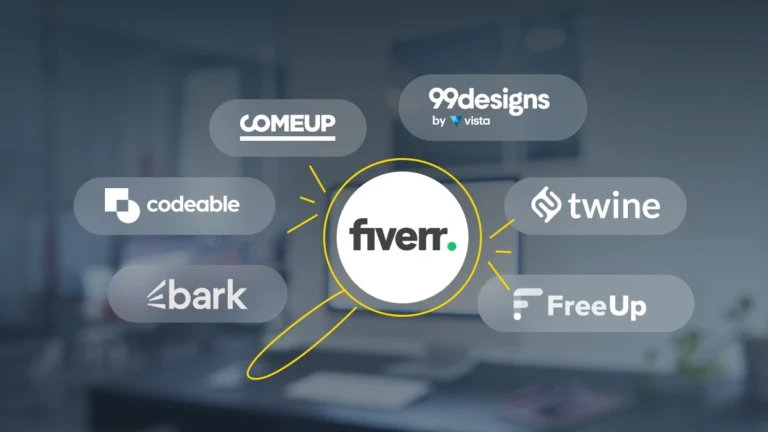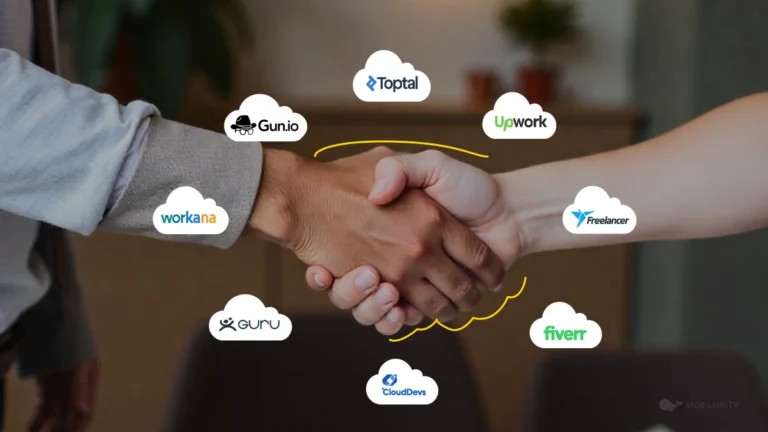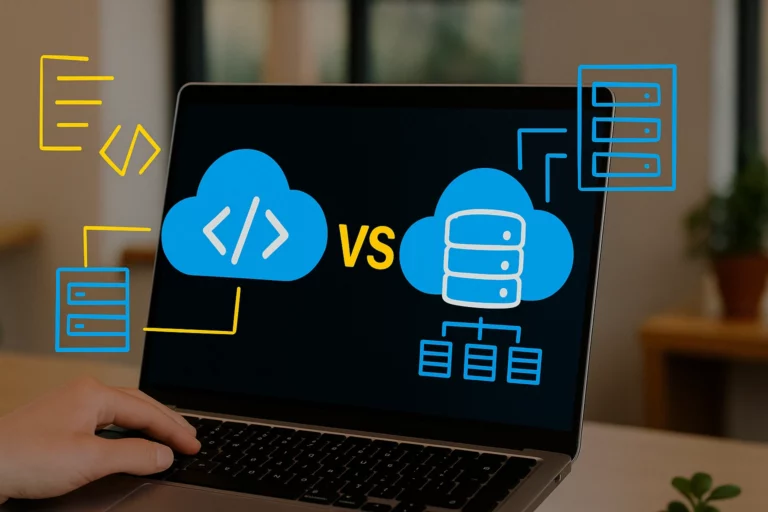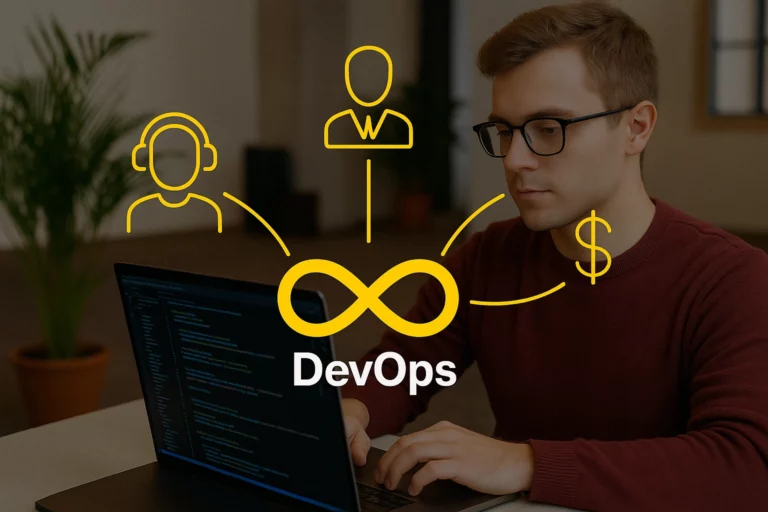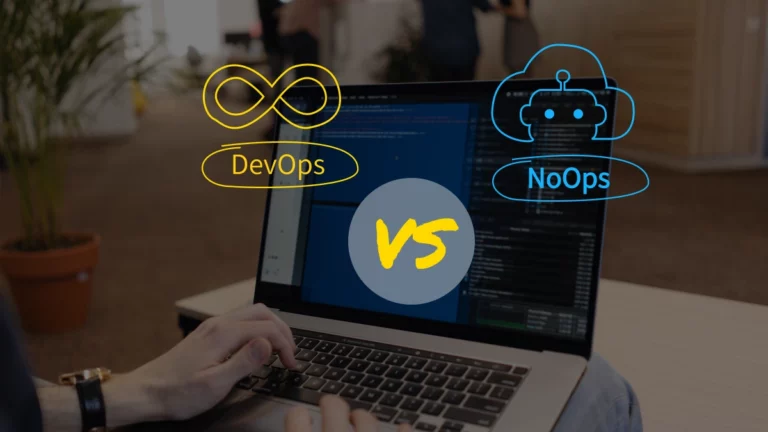Hire a DevOps for Configuration and Change Management
- Configuration Management: How It Works and the Benefits Involved
- Change Management: How It Works and the Benefits Involved
- Tools Used for Configuration Management
- The Benefits of Hiring DevOps for Software Configuration Management
- FAQ
- Find a Dedicated DevOps Configuration Management Team With Mobilunity
Change management and configuration management both form part of integration management. Both deal with the changes that happen within a project. Change management involves changes associated with the plan, process, and baselines, while Configuration management involves the changes related to the product scope.
Many businesses wonder what are the differences between change management vs configuration management. Let’s explore:
Change management involves managing changes related to plans, processes, and baselines in project management, while configuration management involves managing changes related to the product scope.
Further exploring the difference between configuration management vs change management, it can be said that:
- A change management plan documents the process for managing changes on a project, specifically how changes will be monitored and controlled.
- A configuration management plan documents configurable items that typically need formal change control and the process for managing changes to items.
Configuration Management: How It Works and the Benefits Involved
Configuration management is a release, build and change management process used for maintaining consistency of a project or product’s performance and functional and physical qualities. It ensures the correct configuration of resources, including computer systems and servers, and other technology assets, and informs stakeholders how these items relate to one another.
DevOps software configuration management includes three broad categories:
- Identification
This is the process of finding and cataloging configuration needs throughout a system.
- Control
Configuration needs may change over time. Configuration control allows this to happen in an efficient, effective, and controlled way.
- Audit
A configuration audit is like reviewing the current systems to ensure that it matches compliance regulations and validations.
Most IT configuration management in DevOps processes include a high level of automation to achieve their goals. By using automation, it’s easier and more manageable to build in checks, reduce redundancies and lower the potential for oversights due to human error.
The benefits of configuration management include:
- Reducing the risk of system failures and data breaches because it offers enhanced visibility and tracks all changes made to test environments;
- Offering greater agility and better solutions and resolution of issues by making it easy for teams to view changes that may have led to the problems;
- Reducing costs by lowering the possibility of duplicating technological assets;
- Restoring services more efficiently because the configuration is automated and documented, making it easier to revert failing environments to their last functional stage;
- Offering more control over important workflows by implementing status monitoring, asset detection, audition, and change implementation procedures.
Change Management: How It Works and the Benefits Involved
Change management is the process of implementing, identifying, adapting to, and controlling change. This process may look different depending on the type of change a business wants to conduct:
- Change management at a project level
This type of change management involves strategies that focus on changes to guarantee a project achieves its intended goal.
- Change management at an organizational level
This type of change management involves how businesses manage and control transformations, such as introducing new processes and integrating new software.
Creating a change management plan can help businesses to create smoother and more efficient transitions. When businesses do not have a plan for implementing, monitoring and reporting on the progress or outcome of changes, they can set themselves up to fail. No matter the type of change needed, change management gives businesses more control over the entire process.
The benefits of change management for businesses include:
- Implementing changes without negatively affecting the day-to-day running of a business.
- Allowing businesses to include specific tasks and events that are relevant for each stage of the change process.
- Providing an efficient way to anticipate challenges and respond to them.
- Allowing the entire business to assess the overall impact of changes.
- Lowering the risk associated with changes.
- Increasing team productivity when teams feel supported and understand the change process.
- Ensuring that customers, suppliers, and all other stakeholders understand and support changes.
The greatest value of change management in DevOps is that it offers a conceptual framework for people, processes, and businesses to implement change.
Tools Used for Configuration Management
There are several tools used by change management and DevOps teams for configuration management allowing changes and deployments to be quicker, scalable, predictable, and maintained in the desired state. As a result, this brings controlled assets into an anticipated state. Some of the tools used for configuration management and DevOps include:
SaltStack
This tool was created for top-speed data collection. It can also scale beyond thousands of servers. SaltStack uses modules in Python to manage configuration details and specific actions. These specific modules manage all the tool’s remote execution and state management behavior. SaltStack makes use of a client-server topology, and configurations are kept in Salt-state files that describe everything needed to manage a system in the wanted state.
Chef
With this tool, businesses can create ‘recipes’ with Ruby. These recipes describe a series of resources that should be in a certain state. Businesses can also manage thousands of Windows or Linux machines from a central server. Chef can run in server mode or a standalone or ‘solo’ configuration. It has great integration with the top cloud providers to automatically provision and configures new machines.
Ansible
Ansible uses SSH meant for automating configuration management, provisioning, and more. It works on the concept of playbooks for configuring and deploying, and organizing deployments. Playbooks can either be written with a minimal set of commands or scaled for more complex automation tasks that may include variables and modules written by other parties.
Puppet
Puppet is an open-source tool for building declarative infrastructure definitions. With this tool, businesses can manage the system’s life cycle from provisioning to deployment and reporting. Puppet works with Windows and Linux. It comes with many prebuilt modules that plugin and allows businesses to support things like Apache on Linux or IIS on Windows. It uses the push model by default, but the pull model can be configured. It also includes many modules for managing and maintaining commercial and open-source software.
Docker
Docker is a popular tool because of its lightweight containerization technology. This technology deploys software applications with all the required parts in a container. This allows it to run on any Linux server, no matter the configuration or settings. Containers can be created and saved as templates that can be used on other hosts running Docker’s engine. The templates can be used to produce more containers with the same operating system and configuration.
Windows PowerShell
This tool allows businesses to set up and enforce configuration across Linux and Windows machines. This enables deployment and management of configuration information for these machines. It also allows for enabling and disabling roles and features, managing files, starting and stopping services, deploying software, and more. It allows for a central configuration with a pull server or can be pushed out to individual machines.
These are just some of the configuration management tools in DevOps that are available for businesses. There are many other suitable for effective configuration management processes.
The Benefits of Hiring DevOps for Software Configuration Management
Configuration management is growing in popularity because it helps businesses automate time-consuming tasks and enable businesses to increase agility. Some of the benefits of hiring an Azure DevOps configuration management team for businesses include the implementation of:
- Infrastructure-as-a-Code (IaaC)
This is a script or code that automates the environment needed for development without manually completing all the steps to create the environment. Environment refers to all computing resources required to build the infrastructure to perform DevOps activities. This can include servers or networks of configurations.
- Configuration-as-a-Code (CaaC)
This is a string of script or code that standardizes configurations in a certain resource, such as a server or network. These types of configurations are implemented during the deployment stage to make sure the infrastructure’s configuration fits the application.
The benefits of IaaC and CaaC include:
- The infrastructure environment provides standardization as a result of automation.
- Lower chances of human error in setups.
- Enhanced collaboration between operations and development.
- The infrastructure is more flexible and ready to scale.
- Consistency in each step across all resources.
Configuration management should not be seen as separate from DevOps. Comprehensive configuration management is essential for a properly functioning Azure DevOps configuration management team, as it lays the basis for far more automation than that which it affects directly.
FAQ
When it comes to DevOps and configuration management and DevOps change management process implementation, there are several points to consider to understand which service is best for a specific business and how to access these solutions. Let’s explore three of the most important questions:
Find a Dedicated DevOps Configuration Management Team With Mobilunity
Mobilunity is a well-established, acknowledged, and highly recognized IT staff augmentation company based in Ukraine. We take pride in having more than 10 years of experience offering DevOps change management and DevOps configuration management teams for businesses of all sizes in various industries. Whether you need to hire remote devops developers or are looking for dedicated programmers, Mobilunity is your reliable partner. We can offer professional Erlang developer, system infrastructure engineer, Opencv developers and much more quilified experts! To enhance your DevOps strategy for configuration and change management, hire dedicated azure developers to bring in specialized expertise in Azure cloud services, streamlining deployments and improving infrastructure agility.
We work with companies in more than 20 countries. A few of our clients include Network of Arts in Israel, DNest in Spain, esurance in Switzerland, 42 Matters in Switzerland, and Minedia in Japan.
At Mobilunity, we aim to accept new challenges, expand the operations of businesses worldwide, and deliver excellent quality and efficiency to our clients. To do this, we follow the effective process below:
- We recruit
We pick top candidates that suit your ideal candidate profile. Thereafter, they complete a test task and go through a range of interviews. We then select the best candidates and make them an offer approved by you.
- We help with onboarding
Once the most suitable candidates have been selected, we assist with the onboarding phase. We ensure our workers are set up with the right tools and resources for maximum productivity.
- We assist with retaining workers
We are enthusiastic about long-term relationships. Therefore, our team works hard to ensure contractual obligations are always met and that our clients’ needs are satisfied every step of the way.
